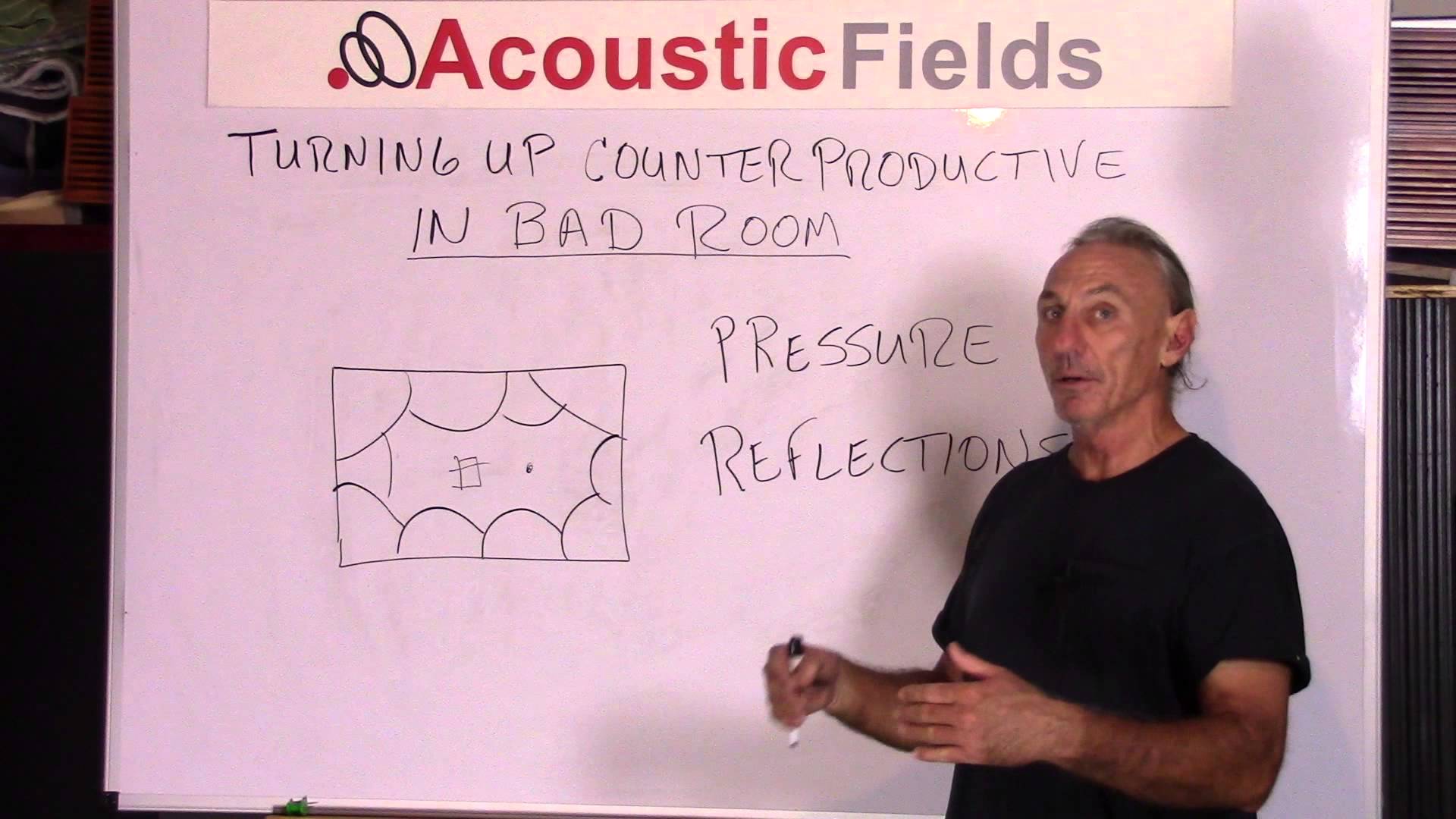We get a lot of comments about why distortions occur when turning up the music your room. People are turning the gain up, so adding more energy, and this happens because you like what you hear and then you want to hear more of what you like. So we give it a little bit more gain without really thinking about what’s going to happen inside of our room. So tuning up can be counterproductive in a bad room. Let’s look at why that’s the case.
Two Major Room Issues – Pressure & Reflections
Well we know from all of our discussions and videos, that the room has two major issues, pressure and reflections.
We have a box, your room, and we put a bunch of energy in it and some of it fits and some of it doesn’t. That energy that doesn’t fit causes big pressure areas. It’s highest, closest to the room boundary surfaces but nonetheless large pressure areas are there within your room.
A microphone or a listening position in an area that’s got high pressure or low pressure, well you will be able to hear some things and maybe not hear others at all. So we want the pressure in the room to be as equally distributed as possible and any areas that are really high and really bothersome have to be treated.
Obviously reflections in our room surfaces play a big role. So we have to be very careful about the correct management of reflection.
So when you turn the gain up in your room, any problems that are in your room that relate to pressure, modal issues and reflections are just exasperated. You just increase that and you reach a level where the room sound overpowers the direct sound, the music from your system, and you can hear that, when you overdrive a driver, when you overdrive a speaker you can hear that. When you overdrive your room, you can hear that also so you have to be very careful about turning up.
More volume is counterproductive in an untreated room
It is really counterproductive in a bad room because you just add to the amplitude in some cases of the pressure issues that are unwanted and maybe are untreated. So it’s a delicate balance.
Most rooms have a pressure level that they sound best at just like most rooms have a frequency that they cross over at and we’ll talk about that in some other video. But if you want to play higher pressure levels, eighty five, ninety SPL, then you know you need to make sure that you’ve treated your room and minimize these pressure and reflection issues because all you do is, when you turn it up, produce a counterproductive room and you’ll be dissatisfied.
Now that said, you’ll also be aware of really what you need to do in terms of treatment so a little bit of gain if you want to test the low frequency capacity of your room and what needs to be treated, a little bit of gain will tell you that right away.
In Summary
If you want to learn more about this subject or have follow up questions, please sign up for our free room acoustic treatment videos and ebook which provide step by step instructions on all major room acoustic issues. Get instant access by signing up now.
Thanks
Dennis









